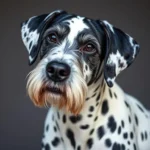
Introduction
When it comes to choosing a dog, many prospective owners are concerned about allergies. Hypoallergenic dog breeds are often sought after by those who suffer from allergies or sensitivities to pet dander, saliva, and urine. But what exactly does “hypoallergenic” mean in the context of dogs, and how does it relate to one of the most beloved breeds, the Golden Retriever?
Golden Retrievers are known for their friendly demeanor, intelligence, and loyalty, making them a popular choice among families and individuals alike. However, a common misconception exists that they may be hypoallergenic, leading many to wonder: are Golden Retrievers hypoallergenic? In this article, we will delve into the hypoallergenic qualities of Golden Retrievers and what potential dog owners need to know.
Understanding Hypoallergenic Dogs
Definition of Hypoallergenic
The term “hypoallergenic” refers to substances that are less likely to provoke an allergic reaction. In the context of pets, hypoallergenic breeds are those that produce fewer allergens, or at least, minimize the spread of allergens in their environment. Common allergens associated with dogs include dander (tiny flakes of skin), saliva, and urine, all of which can trigger allergic reactions in sensitive individuals.
Why People Seek Hypoallergenic Breeds
For many people, allergies can significantly impact their quality of life. Symptoms such as sneezing, itching, and difficulty breathing may arise from exposure to pet allergens. Therefore, individuals with allergies often seek breeds that are less likely to trigger these responses, allowing them to enjoy the companionship of a dog without the discomfort that comes with allergies.
Characteristics of Hypoallergenic Dog Breeds
Typically, hypoallergenic dog breeds are characterized by low-shedding coats or hair instead of fur. Breeds such as Poodles, Bichon Frises, and Maltese are known for producing less dander and hair, making them more suitable for allergy sufferers. Additionally, their coats often require regular grooming, which helps to manage allergens and maintain a clean environment.
Overview of Golden Retrievers
Breed History and Characteristics
Originating in the Scottish Highlands during the late 19th century, Golden Retrievers were bred for retrieving game during hunting expeditions. Their gentle temperament, intelligence, and striking golden coats made them ideal companions for both hunters and families. Golden Retrievers typically weigh between 55 to 75 pounds and stand 21 to 24 inches tall at the shoulder. They are known for their friendly nature, intelligence, and eagerness to please, making them highly trainable.
Popularity and Common Uses
Golden Retrievers are among the most popular dog breeds in the United States and around the world. Their friendly demeanor makes them great family pets, while their intelligence and versatility allow them to excel in various roles, including therapy dogs, service animals, and search and rescue dogs. Their sociable nature and strong bonds with humans make them a favorite for many households.
Are Golden Retrievers Hypoallergenic?
Shedding and Dander
When discussing whether Golden Retrievers are hypoallergenic, it’s essential to address their shedding and dander production. Golden Retrievers have a double coat, consisting of a soft undercoat and a water-repellent outer coat, which they shed year-round, but particularly during seasonal changes. This shedding can lead to an increase in dander in the home, which can be problematic for allergy sufferers. Compared to breeds classified as hypoallergenic, Golden Retrievers may produce more dander and hair, making them less suitable for some allergy-sensitive individuals.
Factors Affecting Allergies
Individual reactions to dog allergens can vary significantly. While one person may experience severe allergic symptoms around a Golden Retriever, another may have minimal reactions. Factors such as the person’s health, the dog’s grooming routine, and the cleanliness of the home all play a role in managing allergies. Regular grooming and cleaning can help reduce the amount of dander and hair that circulates in the home, potentially alleviating some allergy symptoms.
Expert Opinions and Research Findings
Veterinary and allergist opinions on Golden Retrievers and allergies vary. Some experts suggest that despite their shedding, proper grooming and cleaning can help manage allergens effectively. Research indicates that individuals with dog allergies often react more to specific breeds than others, so personal experience is vital in determining whether a Golden Retriever might be suitable. Surveys have shown that some allergy sufferers can tolerate Golden Retrievers better than other breeds, but this is highly individual.
Alternatives for Allergy Sufferers
Low-Shedding Breeds
If you are an allergy sufferer considering a dog, there are several low-shedding breeds that may align better with your needs. Some popular hypoallergenic breeds include:
- Poodle: Available in standard, miniature, and toy sizes, Poodles have curly coats that trap dander and hair, preventing it from spreading.
- Bichon Frise: With a soft, curly coat, Bichon Frises are known for their playful nature and minimal shedding.
- Maltese: These small dogs have long, silky hair that requires regular grooming but produces less dander.
- Portuguese Water Dog: Athletic and intelligent, they have a dense, curly coat that helps contain allergens.
While these breeds may be more suitable for allergy sufferers, it’s important to remember that they also require regular grooming and care.
Considerations for Choosing a Dog
When selecting a dog, allergy sufferers should consider several factors, including the breed’s grooming needs, temperament, and their own susceptibility to allergens. Spending time with a dog before making a decision can help gauge any allergic reactions and assess compatibility.
Managing Allergies with Golden Retrievers
Grooming Practices
If you decide to welcome a Golden Retriever into your home despite potential allergies, effective grooming practices can help minimize allergens. Regular brushing (ideally several times a week) can significantly reduce shedding and dander in the house. Tools like de-shedding brushes and grooming gloves can effectively collect loose hair and dander. Additionally, bathing your Golden Retriever every few weeks can help control dander production, but be cautious not to over-bathe, as this can strip the skin of its natural oils.
Environmental Control
Creating a pet-friendly home for allergy sufferers involves implementing certain environmental control measures:
- Air Filters: Install HEPA air filters in your home to trap allergens, including pet dander.
- Cleaning Schedule: Establish a regular cleaning routine, including vacuuming carpets and upholstery, and washing dog bedding to keep allergens at bay.
- Designated Pet Areas: Limit your dog’s access to certain areas, such as bedrooms, to create allergy-free zones.
Health and Diet Considerations
Interestingly, a dog’s diet can influence its coat health and the amount of dander produced. Feeding a high-quality diet rich in omega-3 and omega-6 fatty acids can promote a healthy coat and skin, potentially reducing dander. Hypoallergenic dog food options may also help if your Golden Retriever has sensitivities that could exacerbate allergy symptoms.
Conclusion
In summary, while Golden Retrievers are beloved for their friendly nature and intelligence, they are not classified as hypoallergenic. Their shedding and dander production can pose challenges for allergy sufferers. However, with proper grooming, environmental controls, and mindful management, it is possible for some individuals with allergies to coexist with these wonderful dogs.
Ultimately, the decision to bring a Golden Retriever into your home as an allergy sufferer should be based on personal experiences and considerations. If you are drawn to the breed, spending time with one before making a commitment can be invaluable.
Owning a dog is a significant decision, and understanding the implications of allergies is essential for both the dog and owner’s well-being.









